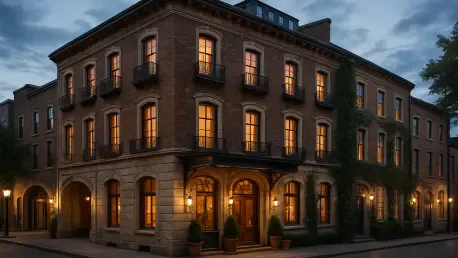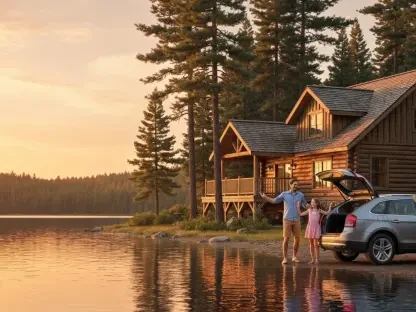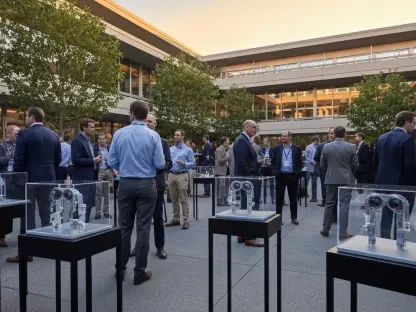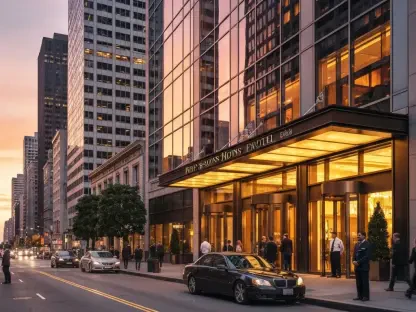Allow me to introduce Katarina Railko, a seasoned expert in hospitality management with a deep-rooted passion for travel and tourism. With years of experience shaping guest experiences in boutique properties and a prominent voice in entertainment and events, particularly through her work with expos and conferences, Katarina brings a unique perspective to the evolving world of upscale lodging. Today, we dive into her insights on managing historic boutique hotels, leveraging unique locations, and creating memorable guest experiences, inspired by recent industry moves like the expansion into properties with rich cultural significance. Join us as we explore how history, luxury, and strategy intertwine in this fascinating sector.
What excites you most about the opportunity to manage a historic boutique property with a unique backstory, like one originally built as a convent?
I think what’s most exciting is the chance to preserve and celebrate a property’s history while introducing it to a modern audience. A building that started as a convent carries so much character—there’s a sense of serenity and purpose baked into the walls. It’s about storytelling, really. You get to weave that heritage into every guest interaction, from the design elements to the way staff share anecdotes about the past. It creates a connection that’s hard to replicate in newer builds, and it’s incredibly rewarding to see guests light up when they feel that sense of discovery.
How does a location in a scenic and culturally rich area, such as near the Hudson River, enhance the value of a boutique hotel?
Location is everything in hospitality, especially for boutique properties. Being near something as iconic as the Hudson River, with its stunning views and proximity to a major hub like New York City, offers a dual appeal. You’ve got the tranquility of a getaway spot paired with easy access for urban dwellers seeking a quick escape. It adds a layer of allure that can’t be manufactured—it’s a natural draw for romantic retreats, weddings, or even corporate groups looking for inspiration outside the city. That kind of setting elevates the entire experience and gives you a competitive edge.
What are some of the unique challenges of operating a smaller, historic hotel with a limited number of rooms compared to larger properties?
With a smaller hotel, especially one with historic roots, every detail matters because there’s no room to hide imperfections. You’ve often got aging infrastructure that requires delicate maintenance—think plumbing or wiring that wasn’t built for modern demands. Plus, with fewer rooms, revenue streams are tighter, so you have to maximize every guest interaction to ensure they return or spread the word. It’s a balancing act between preserving the original charm and meeting today’s expectations for comfort and tech, which can be tricky but also incredibly fulfilling when you get it right.
In what ways do you tailor the guest experience to reflect the individuality of a boutique property with such a distinct history?
It starts with embracing what makes the property special. For a historic hotel, that might mean highlighting architectural quirks or hosting events that nod to its past—like themed dinners inspired by the era it was built. I also focus on personalized touches, like staff knowing guests by name or curating local experiences that tie into the area’s culture. It’s about creating moments that feel authentic, whether that’s a quiet corner for reflection that echoes the building’s spiritual origins or partnering with local artisans to showcase the region’s flavor in the decor or menu.
How do you approach marketing a boutique hotel that offers both breathtaking natural surroundings and easy access to a major city?
You’ve got to play to both strengths. I’d craft campaigns that paint the hotel as an escape—highlighting the peaceful views and natural beauty for those craving a break, while also emphasizing how close it is to the city for convenience. Social media is huge here; stunning visuals of the scenery can go viral quickly. I’d also target niche markets—think couples looking for a romantic weekend or small corporate groups wanting an offsite with character. It’s about telling a story of duality: a serene hideaway that’s just a short trip from the hustle and bustle.
What does it mean to you to restore a property to its ‘rightful place’ as a top choice for travelers, and how do you envision that transformation?
To me, it’s about recapturing the essence of what made the property iconic in the first place while aligning it with what today’s travelers expect. That might mean refining operations to ensure flawless service, updating amenities without losing the historic charm, or simply rebuilding trust with the community and guests through consistent quality. The vision is to create a place where people feel they’ve stumbled upon something extraordinary—a destination that’s not just a stay, but a memory. It’s a slow build, but when guests start choosing you over bigger chains, you know you’re on the right path.
How does deep knowledge of a specific regional market, like the New York area, influence the way you manage a boutique hotel?
Understanding a market like New York is invaluable because it’s so dynamic. You’ve got to know the seasonal trends—when city folks are itching for a getaway, or when international tourists flood in. It also helps in tailoring offerings; New Yorkers, for instance, value efficiency and authenticity, so you streamline check-ins and focus on local partnerships for dining or excursions. That regional insight lets you anticipate guest needs better and position the hotel as a true insider’s pick, which builds loyalty in a competitive landscape.
What strategies do you use to highlight standout amenities like a full-service spa or a farm-to-table restaurant in a historic setting?
The key is integration—making sure those amenities feel like a natural extension of the property’s story. For a spa, I’d emphasize wellness as a nod to the restorative history of a place like a former convent, maybe incorporating local ingredients into treatments. With a farm-to-table restaurant, it’s about showcasing the region’s bounty and tying it to the hotel’s heritage through menu storytelling or events like chef’s table dinners. You promote these through targeted packages—think a spa weekend or a culinary getaway—so guests see them as core to the experience, not just add-ons.
How do you see the expansion into culturally and historically rich regions shaping the future of boutique hotel management?
I believe it’s a game-changer. These regions offer something mass-market hotels can’t: a sense of place and authenticity that travelers are craving more than ever. Managing boutique hotels in such areas means focusing on hyper-local experiences and sustainability, which resonate with today’s conscious consumers. It’s also about community—partnering with local businesses to create a ripple effect of economic benefit. I think we’ll see more companies prioritizing these unique destinations, not just for profit but to preserve cultural narratives, which is honestly the heart of hospitality.
Do you have any advice for our readers who might be aspiring hoteliers or looking to invest in boutique properties?
Absolutely. My biggest piece of advice is to fall in love with the story of the property first. Whether you’re managing or investing, you’ve got to believe in its potential to connect with people emotionally. Then, do your homework—understand the market, the history, and the guests you want to attract. Don’t shy away from challenges like renovations; they’re often what make the end result so special. And finally, build a team that’s as passionate as you are. Hospitality is a people business, and that passion shines through in every guest interaction. Start small if you need to, but dream big.









